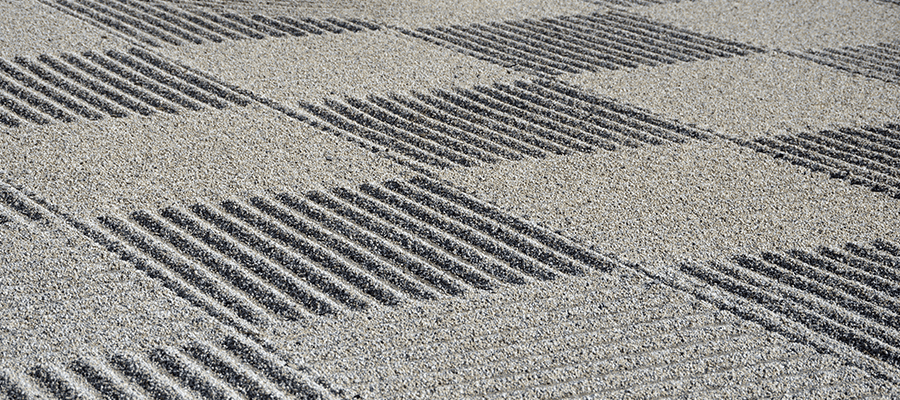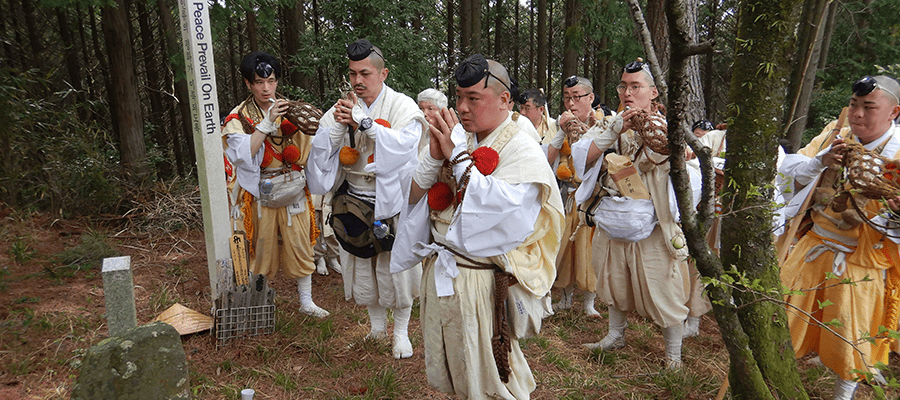Shogo-in Monzeki has held close ties with the Imperial Family since a son of Emperor Go-Shirakawa joined the temple.
As the head temple of Honzan Shugendo, it has a long and esteemed history.
The temple continues to convey its distinguished legacy as a former temporary residence of the Emperor.
Shogo-in Monzeki Temple
History
HISTORY
-
 Deep Ties to the Imperial FamilyShogo-in Monzeki was founded in 1090 and stands apart as a monzeki temple, a special status in which members of the Imperial Family or high-ranking aristocracy have traditionally served as head priests. This means that, unlike typical temples, Shogo-in has been granted exceptional protection by the Imperial Family and has played a significant role in the fields of culture and the arts. Its long history and prestige continue to live on within the temple’s architecture and the many precious artifacts that have been handed down through generations.
Deep Ties to the Imperial FamilyShogo-in Monzeki was founded in 1090 and stands apart as a monzeki temple, a special status in which members of the Imperial Family or high-ranking aristocracy have traditionally served as head priests. This means that, unlike typical temples, Shogo-in has been granted exceptional protection by the Imperial Family and has played a significant role in the fields of culture and the arts. Its long history and prestige continue to live on within the temple’s architecture and the many precious artifacts that have been handed down through generations. -
 The Heart of Shugendo PracticeShogo-in is the spiritual center of Shugendo, an ancient Japanese practice that involves rigorous ascetic training in the mountains to cultivate both mind and body, with the ultimate aim of uniting with nature and the divine. It has a particularly profound connection with the sacred sites known as the Kumano Sanzan and eventually became the head temple of the Shugendo school, called Honzan Shugen-shu. Shogo-in leads the "yamabushi", practitioners of Shugendo, and preserves and transmits the teachings and practices of this spiritual discipline. The head priest of Shogo-in plays a highly important role in the world of Shugendo, offering insight into Japan’s mountain worship and its unique spiritual culture of living in harmony with nature.
The Heart of Shugendo PracticeShogo-in is the spiritual center of Shugendo, an ancient Japanese practice that involves rigorous ascetic training in the mountains to cultivate both mind and body, with the ultimate aim of uniting with nature and the divine. It has a particularly profound connection with the sacred sites known as the Kumano Sanzan and eventually became the head temple of the Shugendo school, called Honzan Shugen-shu. Shogo-in leads the "yamabushi", practitioners of Shugendo, and preserves and transmits the teachings and practices of this spiritual discipline. The head priest of Shogo-in plays a highly important role in the world of Shugendo, offering insight into Japan’s mountain worship and its unique spiritual culture of living in harmony with nature. -
 History and Cultural Assets as the Emperor’s Temporary ResidenceDuring the Edo period (1603-1868), Shogo-in Monzeki was used as a temporary imperial residence when the Kyoto Imperial Palace became unusable due to fires, serving as a place where the Emperor and members of the Imperial Family could temporarily relocate. The history of Shogo-in as a temporary imperial residence is still vividly reflected in its grand structures, such as the Shinden and Shoin halls, and in the somptuous fusuma sliding doors paintings by renowned artists that adorn its rooms. These buildings and paintings are not only cherished for their beauty but are also preserved as valuable cultural assets that vividly recount significant moments in Japan’s history.
History and Cultural Assets as the Emperor’s Temporary ResidenceDuring the Edo period (1603-1868), Shogo-in Monzeki was used as a temporary imperial residence when the Kyoto Imperial Palace became unusable due to fires, serving as a place where the Emperor and members of the Imperial Family could temporarily relocate. The history of Shogo-in as a temporary imperial residence is still vividly reflected in its grand structures, such as the Shinden and Shoin halls, and in the somptuous fusuma sliding doors paintings by renowned artists that adorn its rooms. These buildings and paintings are not only cherished for their beauty but are also preserved as valuable cultural assets that vividly recount significant moments in Japan’s history.